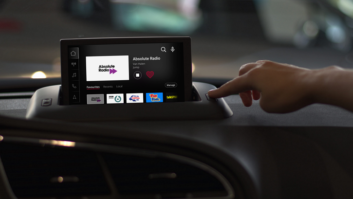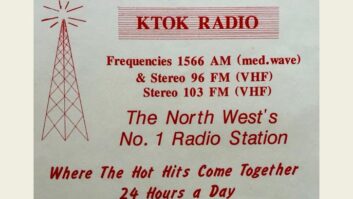ANTWERP, Belgium — Radio 2 Antwerpen recently inaugurated new “pop-up” studios.
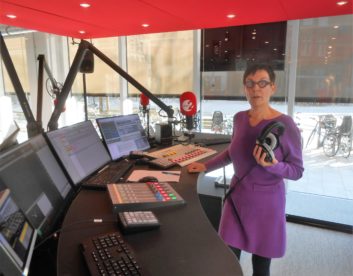
“The basic idea was to bring our regional studios to where people live and work, increasing the station’s visibility,” said Dirk Somers, head of Radio 2’s partners and infrastructure department.
“It was also a cost-savings operation. Before, Radio 2 was housed in buildings with huge studios and space for over 30 people. Today, we have compact, cost-effective and efficient working landscapes in Leuven, Hasselt, Kortrijk and Antwerp.”
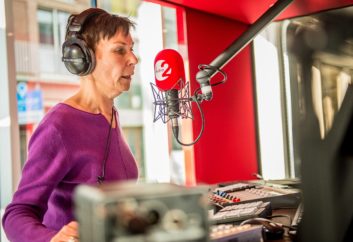
Boosting the regional station’s visibility was a crucial element in the whole process, echoes Steven Cauwenberg, region-manager for Radio 2 Antwerpen. “The past 41 years, the Antwerp regional studio was located in the back part of De Singel arts center. Today, we broadcast from a glass house, located in the very cradle of the city, within walking distance from the River Scheldt and the town hall,” he said.
“Our neighbors in the Beacon (a smart community and hub that houses more than 60 startups focused on AI and IoT innovation) add value to the location. This is where digital creatives, developing smart-city applications like self-driving vehicles, or elements that could become interesting for radio are located. There’s quite some potential in future synergies or cross-pollination here.”
POP-UP RADIO STATION
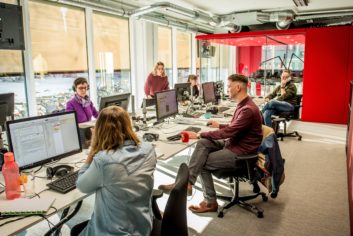
Bearing in mind a possible future relocation, the broadcast site’s infrastructure was conceived as a pop-up studio landscape. “The Beacon building was supposed to be replaced by a new real estate project,” added Somers. “We signed a five-year rental agreement but I gather that, considering the success of the site and its total occupancy, the agreement may be extended”.
The broadcaster initiated the project for the new studio in early 2019, with parameters like visibility, open office structure and user-friendliness playing a crucial role.
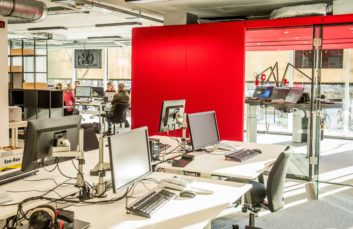
“Radio 2’s regional programs run on weekdays from 6–8 a.m. and 12–13 p.m., plus three regional news inserts in Radio 2’s national programs,” explained Cauwenberg. “When we designed the studios, we calculated the maximum double use of the rooms. The main on-air studio has no specific ‘Radio 2’ branding or imaging, so other channels can use it. In addition, it’s possible to use the production studio as an on-air facility and our interview studio also serves as a meeting room.”
The 350-square-meter (app. 3,800 square feet) open office landscape with huge windows offers plenty of daylight and looks out on a lively square. The on-air studio and the two production cells are housed in Flexboxes — a 100% plug-and-play concept designed by office furniture manufacturer Ahrend.
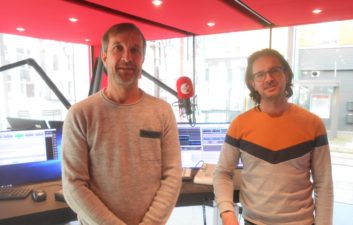
The cabins are designed to offer flexible, modular and functional room-in-room operations. The acoustically insulated Flexboxes, equipped with mains, data connection, LED-lighting and air circulation, were optimized for radio use. Whereas the two production boxes were standard, the on-air studio cube was tailor-made and equipped with air conditioning.
“Alongside the three studio-boxes the work floor is split in a production section for audio production, and a news section for digital and radio content, plus two national news journalists operating from Antwerp as regional hub,” said Cauwenberg.
HEIGHT-ADJUSTABLE DESKS
A DHD 52/XC2 core powers the main on-air studio. There are two DHD 52/MX mixer frames at the presenter position and one mixer for the news host or program sidekick.
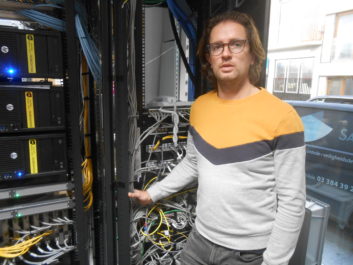
“Two presenters in one self-op studio is new — before, the presenter and news host worked in separate studios,” explained Geert Cantens, engineer with VRT Labo Radio.
Another novelty for Radio 2 Antwerpen is the integration of the Broadcast Bionics PhoneBOX SIP telephone system “Until recently, the Antwerp studio used an ISDN-based telephone system with analog lines. PhoneBOX is fully IP-based allowing recording, editing and the transfer of telephone content from a PC. On the journalists office desk, a small DHD module is used for preliminary talks and switching PhoneBOX footage/material to the main studio, boosting the news flow’s flexibility. PhoneBOX is not only the main hub to receive telephone calls, but can also receives LUCI calls from reporter smartphones.”
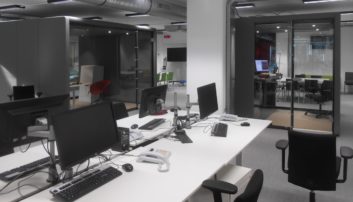
The on-air staff also works from height-adjustable desks — Radio 2 Antwerpen was the last studio with seated presenter positions. “Apart from the fact that we’re really in the middle of the action, quite a different vibe. presenting while standing up is a bonus, and results in better breathing,” said presenter Els Broekmans. “Radio 2’s former tagline, ‘Altijd dicht bij jou’ [‘Always Close to You’] has become true and this reflects in our presentation.”
Although most processing takes place within the DHD engine, an Empirical Labs Distressor was added in the equipment rack. “It has become a standard component for our on-air studios and engineers have become used to the settings,” commented Cantens. “We also use DHD’s internal automatic mic mixer feature for studio guests.”
The on-air studio is equipped with a Dalet Plus playout system, connected with VRT’s database in Brussels as well as Genelec 8240A monitors and Neumann U89 microphones. Two silent PCs are located under the presenter desk. “The whole concept had to be economical. We stepped away from the expensive and complex KVM connection to the engine room,” Cantens explained.
CROSS-TALK STUDIO
“It was crucial that the on-air and production studios had the same functionalities and layout,” continued Cauwenberg.
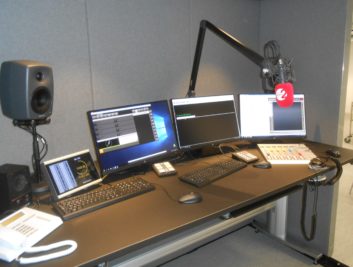
“All studios are self-op — for many people with a journalistic background, this is a next step ahead. That’s why our production booth is identical to the main studio,” he said.
The production Flexbox has a back-up on-air studio, and Cauwenberg underlined the multipurpose aspect of the studio, for use by other VRT channels or programs.
The broadcaster uses a third booth so a guest can be in the Antwerp studio and the reporter in another VRT studio, thus not having to travel between different cities. “We had this option before, but we’ve added a Sennheiser HMD26 headset, an Axis camera and a big display,” Cauwenberg said.
“This allows us to interview people in Antwerp face-to-face, offering a clean feed for any VRT channel, without them having to travel to Brussels. And the room also serves as meeting room.”
The three studios are connected with the DHD 52/XC2 core in the technical area — the signal is routed to VRT’s line center by means of a redundant fiber-optic link.
It was system integrator Amptec who won the public tender for the cabling and installation of the new studio landscape. The company also took on the integration of the studios in Leuven, Kortrijk and Hasselt.
“The main challenge was that the configuration had to be designed in view of a future relocation,” said Jasper Willems, broadcast project engineer with Amptec.
“Both the presenter desk as well as the three racks in the machine room can be disconnected — just put in place the horizontal cabling and the studio can fairly easily be relocated … plug and play!”



